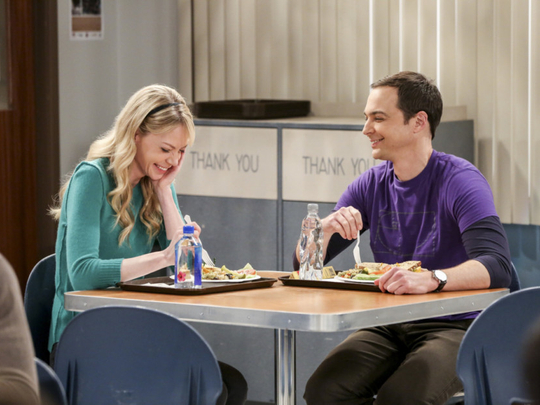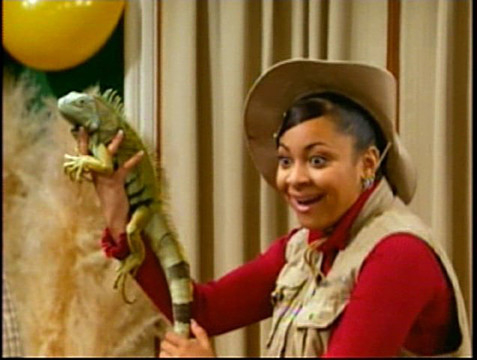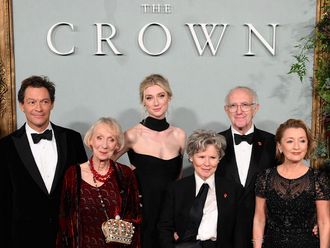
In the last few weeks, we’ve seen trailers for not one, but two spin-off sitcoms coming to TV this year: Raven’s Home and Young Sheldon.
But can either of them find success? History doesn’t paint a pretty picture.
Raven’s Home, premiering in the US on July 21, is a sequel to the early 2000s Disney series That’s So Raven, where the titular character, a teen who can see into the future, is now a mother. Young Sheldon, premiering on November 2, is a prequel to geek comedy The Big Bang Theory, where pernickety genius Sheldon Cooper is shown as his nine-year-old self.
TOUGH TO FOLLOW
Both original series scored high with their target audiences. That’s So Raven was the highest-rated Disney Channel show of all time, and the network’s first to hit the 100 episode mark.
The Big Bang Theory has been on air for 10 seasons and was just renewed for another two; it earned Jim Parsons, who plays adult Sheldon, a Golden Globe and four Emmy Awards for Outstanding Lead Actor in a Comedy Series.
But if the ghost of spin-offs past has taught us anything, it’s that you can’t just ride the coattails of your predecessors to a triumphant finish. If anything, overly popular source material could be harder to build upon, falling victim to high expectations and lazy execution.
NO NEW FRIENDS
Joey is a prime example. It was NBC’s attempt to capitalise on the legacy of Friends, one of the most popular American sitcoms of all time. Joey premiered four months after Friends ended; while 52.5 million people tuned in to watch the Friends finale, just about 18.6 million watched the pilot of Joey — by all means still an outstanding number.
But after that first spike of curiosity died, so did ratings — Joey Tribbiani (Matt LeBlanc) became a hollowed-out shell of himself, and viewership plummeted to 4.1 million by season two. The show went on hiatus mid-season and was retired into oblivion two months later.
Fuller House, a sequel to the hit ‘80s-‘90s sitcom Full House, arrived on Netflix last year to similarly negative reviews — the humour was tedious, derivative and lukewarm. The spin-off featured most of the original gang, minus Mary-Kate and Ashley Olsen, a glaring absence that was turned into a painfully self-aware gag. The whole first season felt like someone photocopied the original at a skewed angle, and the copy came out blurry and unusable. But Fuller House is about to go into its third season, partially thanks to the Netflix model that can ensure Netflix original series make their way onto the recommended watching list.
CHEERS TO FRASIER
That’s not to say all spin-off sitcoms have failed. Frasier, offspring of the raucously popular Cheers, was one of the best examples of how to do it right. Both shows enjoyed high ratings and longevity — they ran for 11 seasons each — and neither lived in the shadow of the other. That’s likely because Frasier, unlike Fuller House and Joey, never pretended to be Cheers. They employed different styles of humour — Cheers quick and boisterous, Frasier dry and mid-Atlantic. Frasier actor Kelsey Grammer also steered clear of two big no-nos: creating a half-baked caricature out of his character, or relegating his onscreen comrades to the side lines. Thus, a convincing new ensemble was born.
Other than Frasier, most successful spin-offs have been dramas: Melrose Place (Beverly Hills, 90210), Angel (Buffy the Vampire Slayer), Boston Legal (The Practice), Torchwood (Doctor Who), Private Practice (Grey’s Anatomy), The Flash (Arrow) and Better Call Saul (Breaking Bad).
Back in the world of comedy, however, it’s hard to ascertain what the reactions will be to Raven’s Home and Young Sheldon. There are major differences to consider. For starters, Young Sheldon will run concurrently with The Big Bang Theory, while That’s So Raven ended ten years ago. Nostalgia could work in Raven’s favour here, but similar to, say, Girl Meets World, the Disney sequel of Boy Meets World that saw Cory and Topanga as parents, the trick may only last a few seasons.
Secondly, Raven’s Home will bring back familiar faces, such as Raven-Symoné in the titular role and Anneliese van der Pol as best friend Chelsea. Meanwhile, Young Sheldon will operate on a plane more similar to The Carrie Diaries (the teenaged version of Sex and the City): a prequel with different actors, who need to convince diehard fans that they could plausibly be the younger versions of viewers’ favourite characters.
But save from being able to see into the future, or break down the theoretical physics of how television works, it’s impossible to say what fate awaits either show. Both have big shoes to fill and difficult audiences to win. Critics can revisit them in a couple of years, if they’re still on the air.
FIVE SPIN-OFFS YOU’VE PROBABLY NEVER HEARD OF
AfterMASH – M*A*S*H
AfterMASH, as evidenced by the title, was an ill-thought-out continuation of comedy-drama Mash was so bad that Time magazine named it one of the worst ideas of the century in 1999.
Time of Your Life – Party of Five
Sibling drama Party of Five managed a Golden Globe a six-season run, but Time of Your Life, starring Jennifer Love Hewitt, was pulled after one season.
Ravenswood – Pretty Little Liars
Pretty Little Liars did well for itself as far as mystery teen dramas go. Its supernatural follow-up lasted only one season.
Caprica – Battlestar Galactica
A prequel to 2004’s reimagined Battlestar Galactica, one of the most highly regarded sci-fi series of all time, Caprica received generally positive reviews but was a ratings disaster. It was pulled after 19 episodes.
Top of the Heap – Married… with Children
Somehow, Top of the Heap was the most successful out of three Married… with Children spin-off attempts, yet it only lasted on air seven episodes.
















